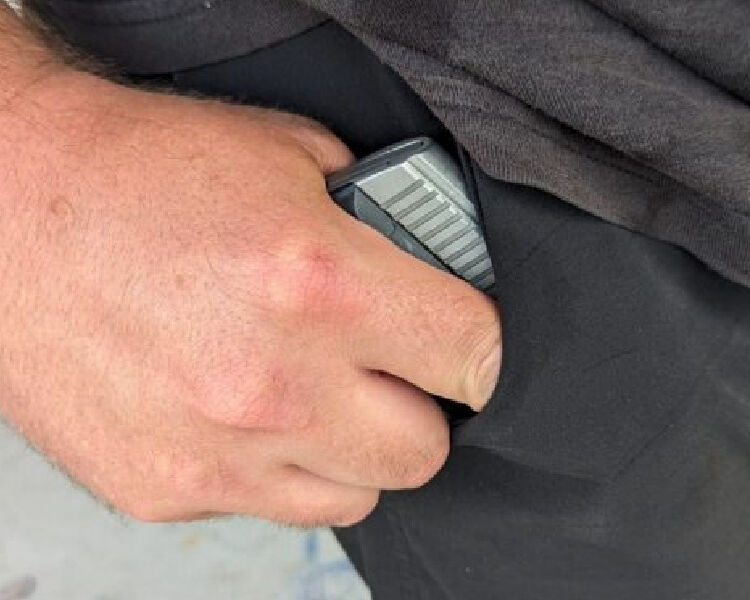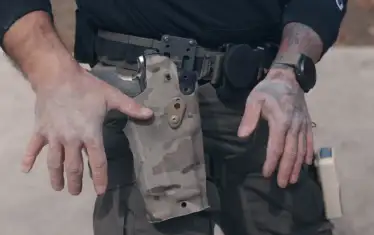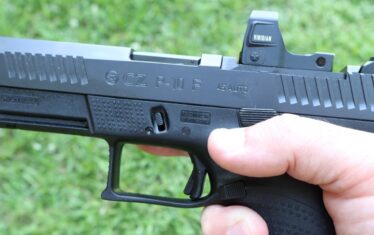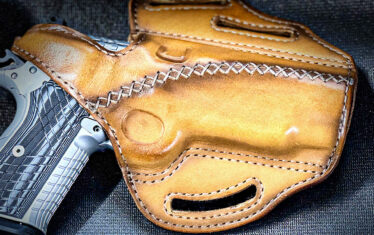There was a time when I rejected the pocket pistol and pocket carry.
Early on in my concealed carry journey, I tried one. It was a Smith and Wesson Bodyguard .380 and I instantly disliked the gun. Sure, it was easy to carry, but I couldn’t shoot it worth a darn. Admittedly, I wasn’t the best shot, but I have improved since. Also, the gun had abysmal sights, an uber-small grip, and that snappy .380 ACP recoil that made it a literal pain to shoot.
However, in the last two years, I’ve become quite the advocate for pocket carry and even pocket pistols. My opinion is that they have a place. They are great for certain situations where a larger gun is a hassle or an inconvenience.
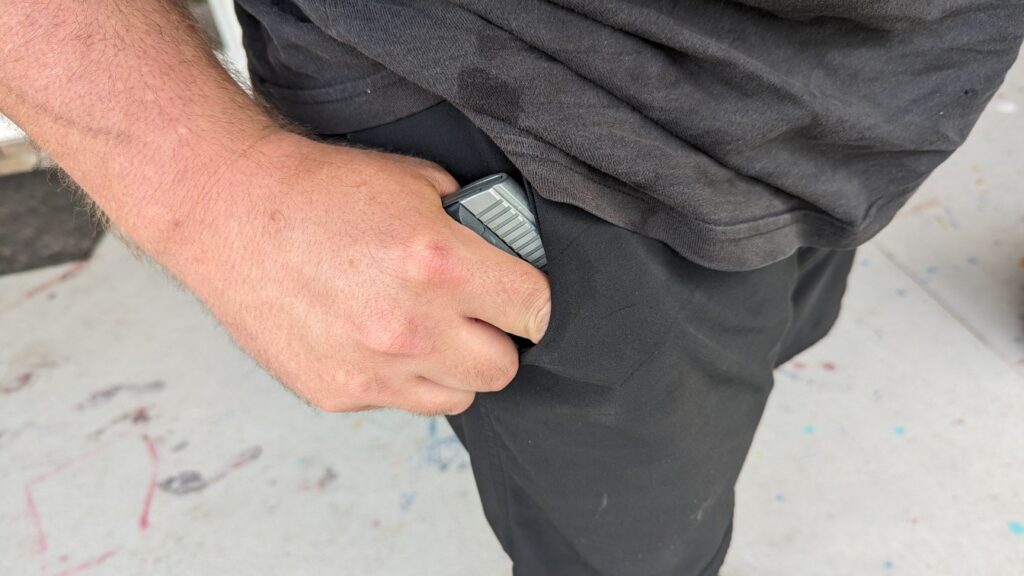
For me, I stick to a pocket-carry when it’s just me and no family. If I’m only responsible for myself, then escape becomes a valid tactic, just as much as fighting. Pocket carry might be a niche option, but it does offer some significant benefits.
The Benefits of Pocket Carry and Pocket Pistols
Speed in a defensive encounter is always critical. As concealed carriers, we work on having a fast draw because speed is a major value. Pocket carry can be fast, but it can also be slow. Having to reach into your pocket from outside can be quite slow.
For those inclined to a fast draw, pocket carry offers you the ability to simply put your hand in your pocket and grip your gun without anyone being the wiser. Drawing and placing an accurate shot on target can be done in under a second with a holster like the Safariland Model 25.
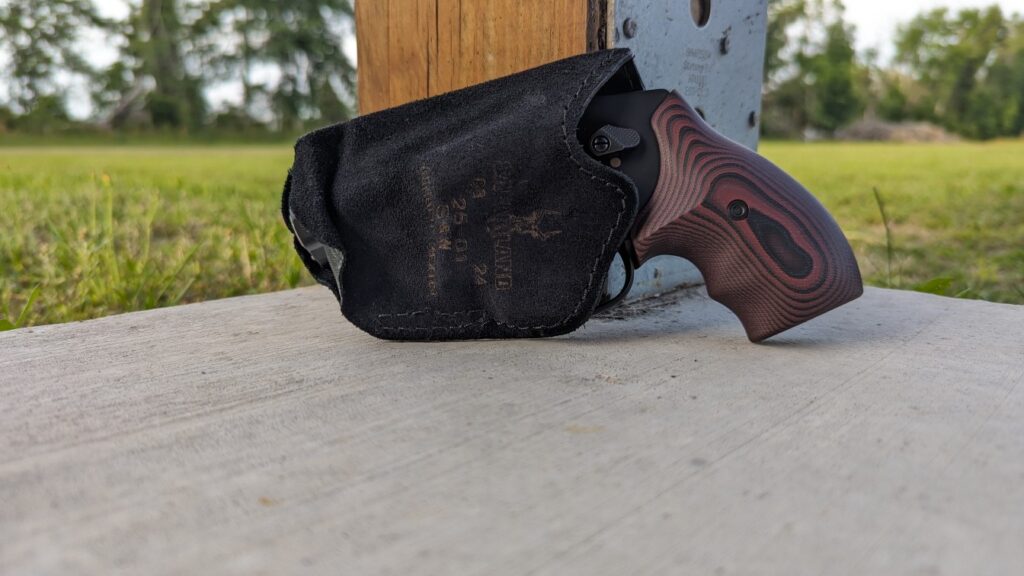
Another obvious benefit to pocket carry is that the gun conceals easily. You don’t need to worry about your shirt riding up or tuckable holsters. It drops in your pocket, and if it’s the right size, it disappears. Admittedly, if you are the tight-pants type, it’s not for you.
And finally, a pocket pistol very convenient. You can carry it easily day in and day out without the poke and prod of a standard holster. If you’re running to the store for milk, the thought of throwing on pants, a belt, and a standard holster might not be that appealing. A J-Frame in your pocket is a heckuva lot better than the Glock 19 left at home.
Now that we know the benefits, let’s look at how you can conquer pocket carry.
Pick the Right Pocket Pistol
The problem that defined my first experience with pocket carry was that I had the wrong gun. It might not be a bad gun, but it was the wrong gun for me.
The trick with pocket carry is finding a gun you can competently shoot, carry, and train with. For me, the pocket .380 ACP was too unpleasant to shoot, and I didn’t want to train with it. I didn’t see any real ballistic advantage to the .380 ACP to justify the recoil, so I went with a different caliber and different gun.
Maybe .380 ACP is for you. Maybe you should look at .22LR. My wife’s daily pocket carry is an LCP 2 in .22LR, and she shoots it quite well. I like the .32 ACP and the .32 H&R Magnum for pocket carry personally. Find the right combination of size, caliber, and compatibility to ensure you have the right option for your needs and preferences.
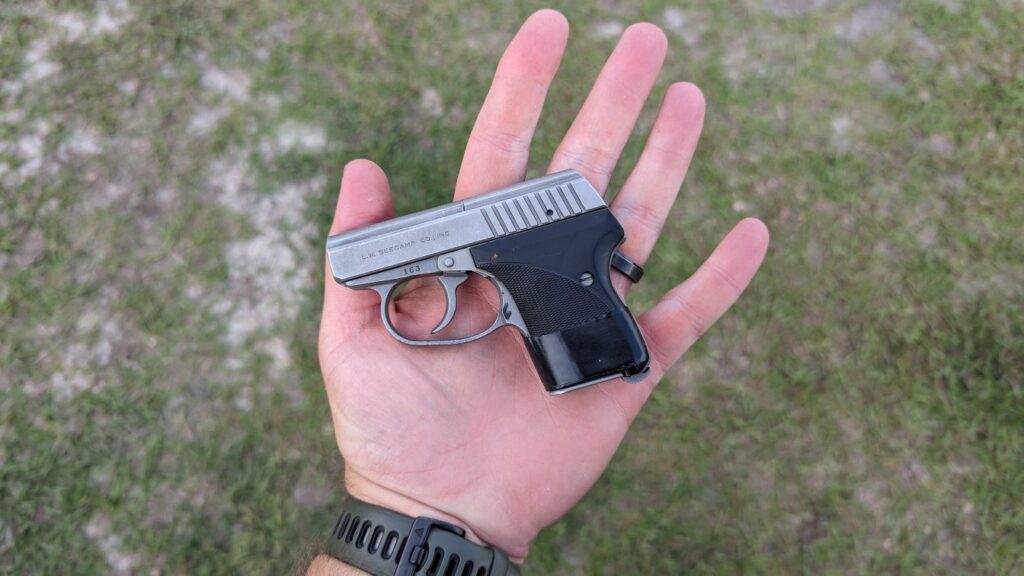
Get a Proper Holster
Now that you have a gun, you need a holster. Your pocket is as much a holster as your belt. Pocket carry holsters are crucial because you need something to protect the trigger. Without it, you risk an unintentional and negligent discharge.
A proper holster allows the gun to be drawn quickly and protects it from pocket gunk. The Safariland Model 25 fits the bill for me.
The holster is made with an external leather-like material lining and an inner hard shell. This keeps the holster open when the gun is drawn. It’s fit for the gun, ensuring it’s retained and secure. It’s super thin and even has a moisture-proof layer to protect the gun.
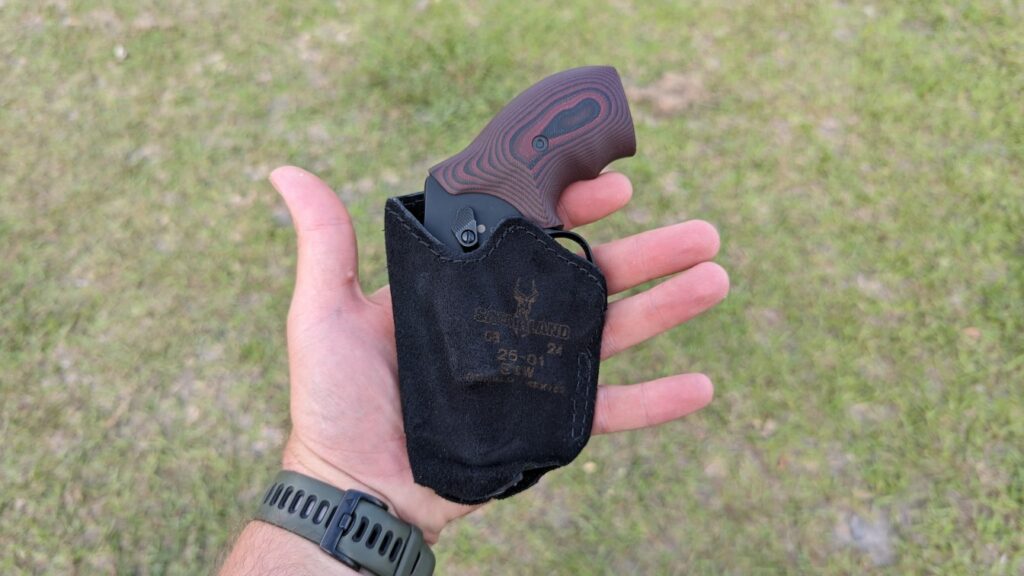
Forget About The Pocket
Next, I need you to forget about whatever pocket you store the gun in. Once the gun is in the pocket, it becomes solely dedicated to that firearm.
Don’t try to carry a pocket knife, keys, or whatever else in the same pocket you carry your gun. This can interact with your trigger, and we don’t want that. Your gun pocket becomes your gun pocket, and nothing more than that.

Practice, Practice, Practice
If you want to pocket carry, you need to train yourself on how to access the gun. It’s an entirely different draw and requires a different skill set and lots of practice to master.
Drawing while standing is one thing, but drawing while sitting is an entirely different skill that requires practice. Drawing and shooting from the pocket can be tricky, but they are necessary skills to learn. Plus, shooting guns small enough to fit inside your pocket can be tricky.
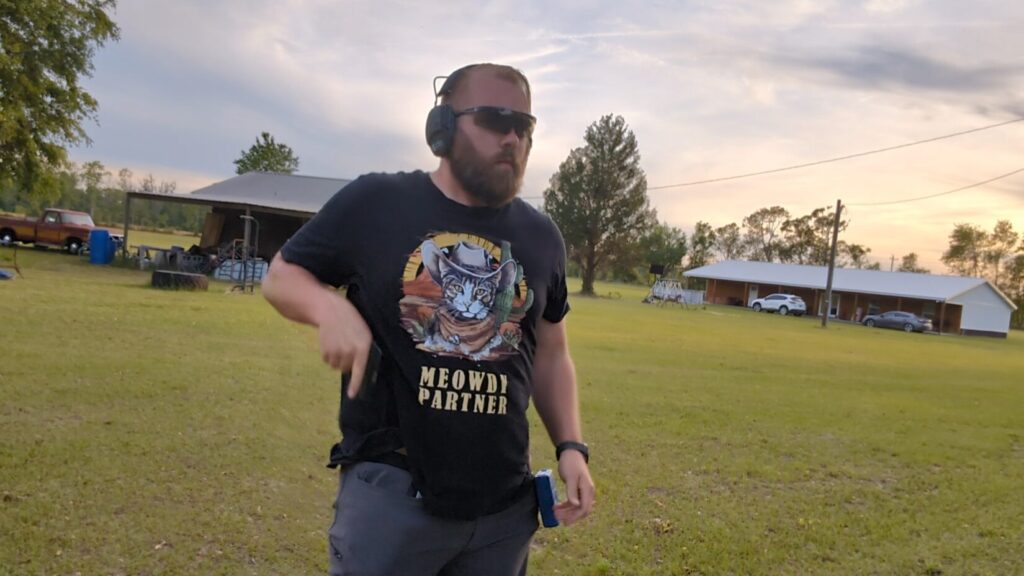
You need to be very competent with your small gun. It’s easy to imagine all potential conflicts occurring at point-blank range, but we aren’t all that lucky. You should be capable of hitting an IPSC target at 20 yards, and with a lot of these guns, that takes practice.
To help you practice your pocket carry, I want to introduce you to the Wizard Drill.
The Wizard Drill
Ken Hackathorn designed the Wizard Drill, and while he didn’t necessarily design it for pocket pistols, it works quite well for pocket pistol shooters.
This is a short drill that only requires five rounds per run. You have 2.5 seconds per stage, but if you’re new to pocket carry, just focus on safety and improving your times over time. You’ll eventually get 2.5 seconds.
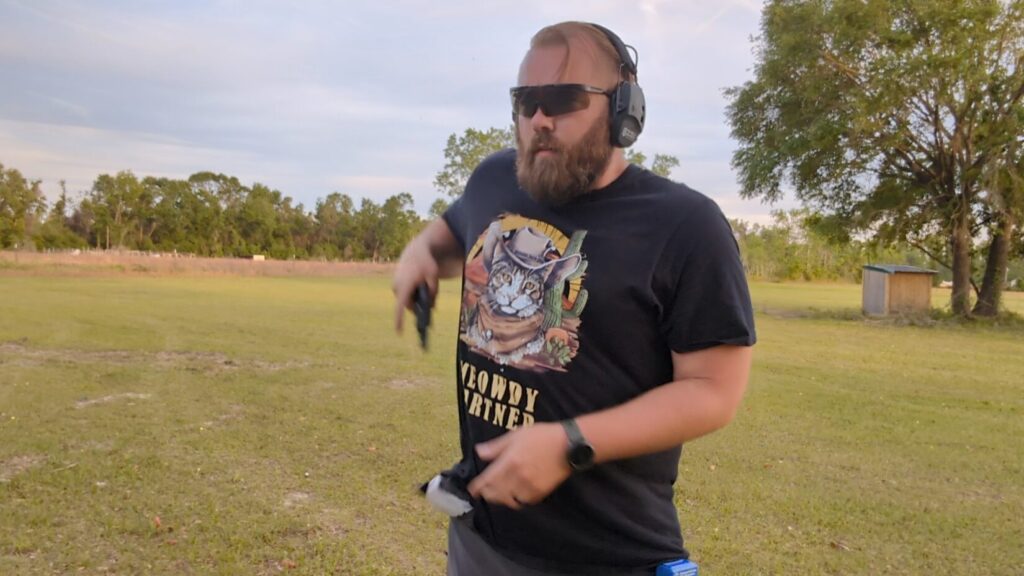
You can practice the drill with your hand on your gun in your pocket or your hands at your side. I do both and practice both drawing techniques. The Wizard Drill has four stages, so let’s dive into it.
Stage One: 3 Yards
Draw and fire one round to the head of your target with your strong hand.
Stage Two: 5 Yards
Draw and fire a headshot with both hands.
Stage Three: 7 Yards
Draw and fire a headshot with both hands.
Stage Four: 10 Yards
Draw and fire two rounds to the body with both hands.
That seems simple, but give it a spin with a pocket pistol. It’s a bit more challenging than you might first think. It’s a great way to practice those drawing skills and get quick, precision-oriented shots on a target.
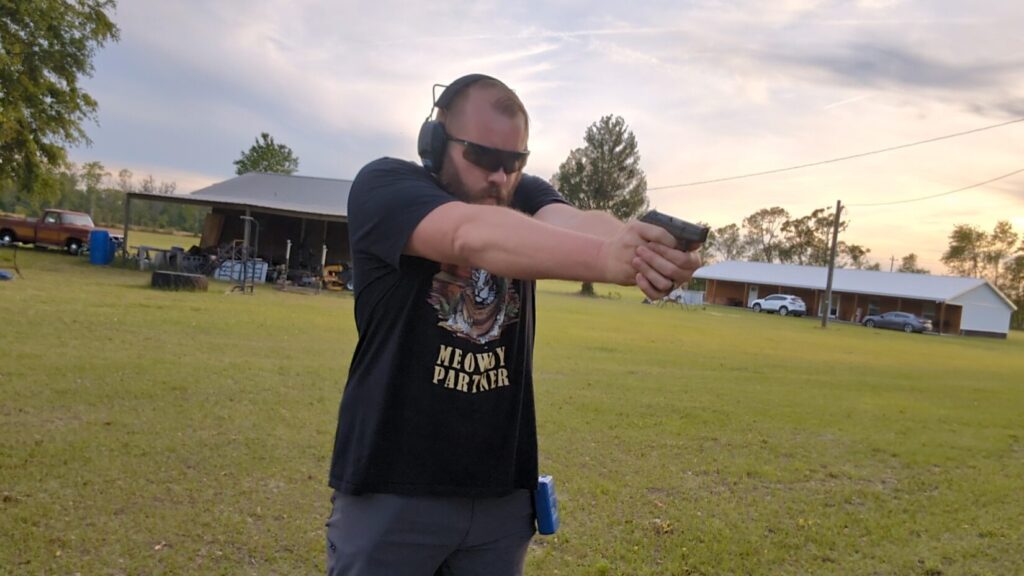
Pocket It
Pocket carry is nowhere near as bad as I once assumed. There is a bit of an art to it, and it’s not necessarily as simple as it sounds. Like any other carry method, there is a safe and effective way to do it, and then there is the wrong way.
I’ve given you the tools to carry safely and effectively, and hopefully I’ve changed your mind on the art of pocket carry and pocket pistols.





